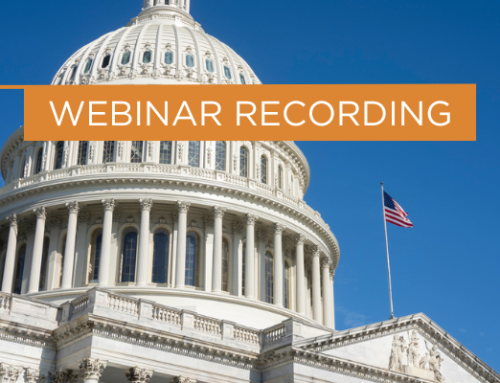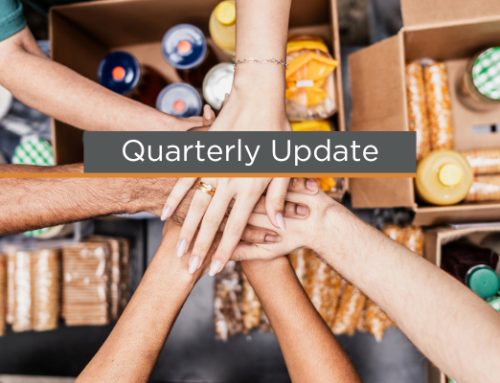By Bo Garner, CPA, MBA
As the first quarter of 2023 wraps up, nonprofits are already well into another uncertain year. Demand for services and programs remains high, but so do operating costs – and donations continue to drop. At a macro level, there are certain trends that organizations can lean into to improve performance.
This is the first in a series of quarterly industry updates about not-for-profit challenges and opportunities.
Donations Are Lower, but Opportunities Remain
Despite a slight increase in the dollar size of donations, there are fewer donors. This trend remained consistent over four of the last five quarters. This isn’t entirely surprising as charitable giving is connected to the economy. A potential silver lining is that half of Americans intend to increase their charitable donations; however, a quarter of Americans also report they plan to reduce their contributions.
Financial Insight: Average Performance Metrics
- Quick Ratio (measures short-term liquidity): 1.56
- Higher is better
- Current Liabilities to Net Worth (measures short-term debt obligations): 0.64
- Lower is better
- Officer Compensation: 3.1 percent*
- Operating Expenses: 93.9 percent*
- Operating Income: 2.9 percent*
- Cash: 32 percent*
- Accounts Receivable: 8.7 percent*
- Accounts Payable: 8.8 percent*
- Current Liabilities: 30.2 percent*
*as a percentage of total revenue
Nonprofits will need to be flexible in the year ahead. High interest rates, inflation, global unrest, and a potential soft recession will continue to impact consumer spending and thus, individual charitable giving.
Organizations can use email marketing to reach new donors, increase awareness, and cut through the clutter of digital noise. Targeted email marketing remains one of the most effective ways to stay in touch with current donors and reach new ones.
The challenge for nonprofits this year is how to turn charitable giving into an experience. This can mean digital fundraising, SMS text messaging, social media, diverse event experiences, personalized fundraising, and more. Many are using LinkedIn to cultivate online communities like never before. Some organizations are turning to cryptocurrency and digital wallets to give donors more options to give.
Deep Dive: Museums, Parks, and Zoos
Not-for-profit museums, parks, and zoos can expect an average five percent growth rate between 2023 and 2027. Leading indicators of segment performance – total U.S. consumer spending, corporate profits, and personal income – all increased year over year from 2021 to 2022.
Like other nonprofit organizations, museums, parks, and zoos rely on consumer donations and are often at the mercy of the larger economy. Especially for smaller entities, it’s likely that a few large donors provide most of the funds for operating budgets. These are all areas to watch closely in the months to come.
Future opportunities include accommodations for older guests, immersive augmented reality experiences, and new fundraising techniques like micro-giving and crowdsourcing.
Deep Dive: Private Schools K-12
Ongoing demand for private school enrollment largely depends on the school’s reputation. There are opportunities to carve out a niche whether the school is large (by providing economies of scale) or small (by specializing in a particular area). Private school enrollment is expected to grow at an annual compounded rate of four percent over the next four years.
One of the bigger ongoing challenges for private schools is uneven cash flow. Even though expenses are due year-round, most of the incoming cash flow occurs at the beginning of terms. There is also increased pressure to disclose more information related to public funding, offer financial aid, manage potential exposure to social media litigation, and proactively address fluctuating enrollment.
There are opportunities for private schools in differentiating themselves by reputation, boosting international enrollment, and seeking growth from minority populations. School administrators can also encourage their families to contribute to tax-advantaged education savings accounts.
Deep Dive: Membership Associations
There is a medium level of demand for revenue growth at membership associations over the next four years. It’s an uneven growth forecast, with 2023, 2025, and 2027 expected to dip into the negative and alternating years experiencing growth ranging from 9 to 11 percent.
Membership, the primary revenue driver, often depends on business activity and whether members feel engaged and connected to programming. Corporate profits and personal consumer income, two leading indicators of association growth, both increased year over year. Losing members continues to be one of the biggest risks for associations.
Some associations are using flexible dues to attract different types of members. Other opportunities include non-dues revenue (products, certifications, conferences, and tradeshows as examples), career or job placement, and cultivating online communities for member engagement.
For questions about nonprofit financial metrics and other trends that may impact your organization, contact Bo Garner, CPA, MBA, Leader of PBMares’ Not-for-Profit group.





